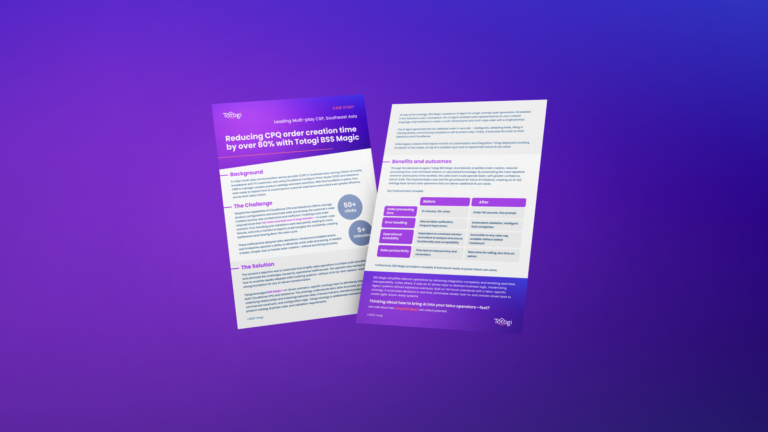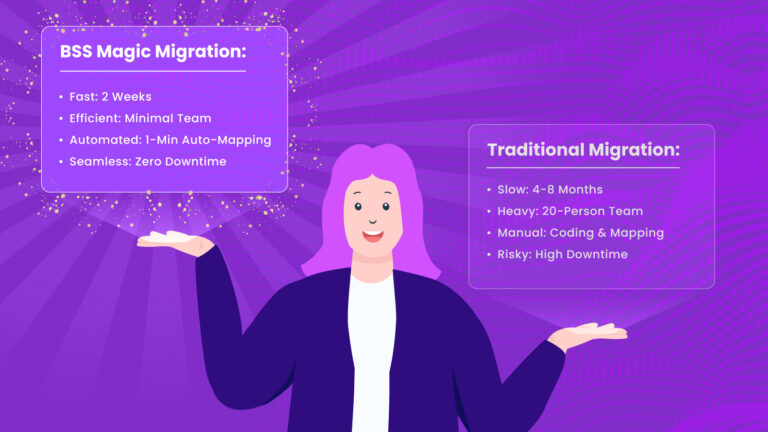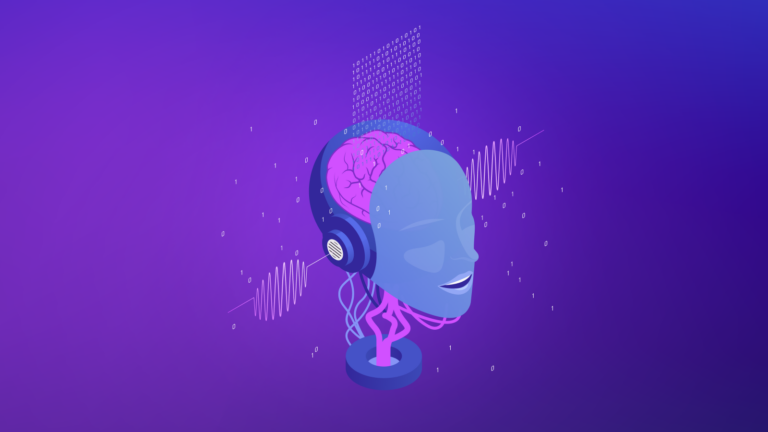AI agents, which I started exploring in my recent blog post, hold great potential to address many of the critical challenges telecom operators are facing today. Fierce competition and the commoditization of core services continue to put pressure on telcos’ bottom lines, while network investments and operational costs do nothing but rise. Business Support Systems (BSS) – which are supposed to, well, support the business – are in fact holding Communication Service Providers (CSPs) back from innovating. Decades of technical debt add layers of complexity; rigid architectures and closed ecosystems require customization on top of another, leading CSPs to become increasingly dependent on their vendors. Vendors, on the other hand, benefit from these dynamics, as much of their revenues rely on professional services, and are not in a hurry to fully adapt Open Digital Architecture.
AI agents, which are capable of independently performing tasks from start to finish, can address many of these challenges, and we indeed see BSS/OSS vendors increasingly introducing agentic AI into their offerings.
However, it’s crucial to understand the variety of approaches these vendors are taking in order to evaluate to what extent those solutions enable true BSS interoperability, eliminate complexity and accelerate innovation. In this blog, I’ll critically examine the current AI agent strategies from leading vendors—Amdocs, Ericsson and Nokia—as well as some horizontal agentic-AI solutions, and clearly highlight how Totogi’s distinctive strategy stands apart.
Vendor strategy deep dive
Each major vendor approaches AI agents differently, influenced by their distinct business models, architectural strategies, and business goals. Some prioritize high autonomy, granting AI agents extensive decision-making freedom to operate independently across multiple systems. Others, however, focus on embedding AI agents tightly within their existing product architectures, closely integrating them to leverage existing investments, maintain consistency, and optimize performance within their proprietary ecosystems. This embedding approach inherently influences the degree of openness vendors provide, resulting in significant variation: some vendors claim open, vendor-agnostic integration capabilities but in practice reinforce proprietary frameworks. Additionally, vendor strategies differ in specificity—ranging from highly specialized agents tailored for particular telecom domains, to broader, more versatile agents capable of managing cross-domain workflows.
Amdocs amAIz suite
Amdocs markets its amAIz agents as autonomous, proactive, and capable of embedding deep telecom domain intelligence. Their agents claim to predict customer needs and autonomously execute actions across various domains including customer experience and network operations. However, despite these ambitious claims, external reviews and practical realities indicate significant gaps in integration complexity and actual openness.
Amdocs’ agents heavily rely on their proprietary AI and Data Platform, promising “100% agnostic” data integration. Yet, real-world scenarios demonstrate a stark contrast. Integration remains cumbersome, with multi-year timelines still prevalent. For example, a recent TelcoDR case highlighted a telco spending five years to transition off Amdocs, emphasizing Amdocs’ persistent delay in adopting genuine open standards. This undermines the purported openness and flexibility of their AI agents, reinforcing vendor lock-in rather than alleviating it.
From an operator’s perspective, the advantages of Amdocs’ approach include a high degree of integration within a familiar ecosystem, potentially offering smoother in-platform interoperability and performance optimization. However, these benefits come with significant disadvantages, notably high integration complexity, slower deployment timelines, increased reliance on professional services, and persistent vendor lock-in, restricting operators’ flexibility and innovation agility.
Ericsson’s autonomous network vision
Ericsson presents a robust vision centered around autonomous network operations. Their “Talk to Your Network (TTYN)” initiative is particularly ambitious, promising agents that can autonomously orchestrate complex network tasks from high-level user instructions. Ericsson’s agents are designed to manage sophisticated network scenarios such as automated network optimization, proactive fault detection, predictive maintenance, and adaptive resource allocation. These capabilities enable networks to dynamically adjust to changing conditions, significantly enhancing operational efficiency, reliability, and responsiveness.
However, Ericsson’s agent strategy remains largely network-centric, focusing predominantly on optimizing network resources, rather than holistic business support. While technically impressive, their approach does not fully address the broader challenges telecom operators face in business operations, customer experience, or cross-system interoperability.
Nokia
Nokia has adopted a more cautious, domain-specific approach to AI agents. Nokia has developed targeted agentic capabilities focused on network operations and security management. A notable example is their autonomous Threat Hunt Assistant, designed to proactively detect and respond to cybersecurity threats within network operations. These implementations provide significant operational benefits in their specialized domains by enhancing security posture and optimizing network performance. Yet, Nokia’s approach does not address cross-domain interoperability or broader business operations support, keeping these solutions constrained within specific vendor-bound scenarios.
From a telecom operator’s perspective, the advantages of these domain-specific agents include focused expertise, accelerated performance in targeted tasks, and specialized operational improvements. On the downside, however, it doesn’t solve many of the operators’ challenges. Operators are limited by the lack of cross-system interoperability and the risk of deepening vendor lock-in, potentially hindering broader strategic agility and comprehensive innovation across diverse telecom operations.
Horizontal agentic-AI platforms
Outside the telecom-specific domain, the broader agentic AI ecosystem includes a range of tools that serve different purposes and audiences. To make sense of it all, it’s helpful to group these into two categories: developer-focused agent orchestration platforms and domain-specific or low/no-code agentic applications.
On the developer tooling side, we have hyperscaler frameworks like AWS Bedrock, Google’s Vertex AI Agent Builder, and Microsoft’s AutoGen. These platforms are designed to help engineers and AI developers build and orchestrate custom agent workflows, often involving multi-agent collaboration, tool use, and code generation. They’re flexible and powerful, but require deep technical expertise and infrastructure knowledge to use effectively. Totogi’s BSS Magic is built on AWS Bedrock, leveraging its secure, scalable GenAI infrastructure to orchestrate telecom-grade agents capable of end-to-end automation.
Then there are platforms like Salesforce’s Agentforce or LangChain, which offer more accessible or packaged agent capabilities. Salesforce’s Agentforce deeply integrates within the Salesforce ecosystem, automating tasks across CRM domains, but its tight coupling limits cross-platform use. LangChain, on the other hand, is an open-source framework that enables flexible agent and tool orchestration with a strong developer community and extensibility across domains – but is lacking the telco-specific knowledge and inference capabilities.
Some vendors, like Aisera, focus on specialized turnkey solutions with pre-built agents for domains like IT, HR, and customer service. These platforms excel in narrow use cases but lack the breadth, openness, or deep customization potential required for telecom-grade interoperability.
For telecom operators, these horizontal agentic-AI solutions each offer value depending on the use case, but they typically fall short in telecom-specific inference and execution. Developer-focused frameworks like AWS Bedrock—Totogi’s own foundation—provide powerful, cloud-native infrastructure to support scalable, interoperable agents. But they are designed for development teams, not telco IT departments seeking plug-and-play solutions. On the flip side, packaged agent applications can accelerate specific workflows but often impose constraints around flexibility, extensibility, and vendor independence. In contrast, Totogi bridges the two worlds: offering telecom-grade AI agents that are built on hyperscaler robustness, yet ready for immediate telco deployment.
Totogi’s differentiated approach
On its mission to set telcos free from legacy constraints, Totogi reshapes how AI agents operate in telecom—moving away from tightly coupled, vendor-specific models and toward an intelligent, open, and truly interoperable architecture. At the core of this approach is the Telco Ontology: a dynamic, AI-driven semantic framework that understands telecom at the data, process, and API level. It acts as a universal translator between disparate systems, enabling AI agents to bridge silos and orchestrate business workflows across any stack.
Instead of embedding agents into proprietary software modules, Totogi’s BSS Magic overlays existing environments. It abstracts vendor-specific complexity and business logic, unlocks trapped data, and transforms it into actionable knowledge that agents can use to execute high-level business intents. Whether it’s a CRM, billing platform, or network inventory system—whether it’s Ericsson, Amdocs, or any other vendor—BSS Magic agents can “speak the language” of each system and collaborate across them using TM Forum-compliant APIs and AI-generated code.
This is not mere theory. In production with a leading multi-play CSP in Southeast Asia, Totogi’s agent-based integration with Salesforce and CloudSense cut order processing time by 80%, from 5 minutes to 50 seconds. At a North American tier-1 client, a legacy billing migration project that was expected to take 8 months was completed in just 14 days using BSS Magic. These are not isolated success stories—other deployments have shown similar results, slashing months-long change request timelines to days. With Totogi, telecom operators gain the speed, flexibility, and interoperability needed to finally shift from survival mode to innovation mode.
Comparative analysis & conclusion
Let’s compare the AI agent strategies of leading telecom vendors—and a few general-purpose platforms—across five key dimensions:
| Vendor / platform | Architecture approach | Autonomy scope | inter-operability | Time-to-value | Vendor lock-in |
|---|---|---|---|---|---|
| Amdocs amAIz | Embedded | Cross-domain (claimed) | Limited, proprietary | Multi-year | High |
| Ericsson | Embedded | Network- focused | Network-centric only | Multi-year | High |
| Nokia | Embedded | Domain-specific | Limited to Nokia suite | Multi-year | High |
| Salesforce Agentforce | Embedded | CRM-focused | Limited outside salesforce | Quick (in-suite) | High |
| Hyperscalers (AWS, Microsoft, Google) | Developer framework | Multi-agent orchestration | Strong | Dev dependent (usually long) | Moderate |
| Horizontal agentic-AI solutions | Overlay | Custom multi-domain | Limited for CSPs, no telco-specificity | Days, for supported interfaces | Low |
| Totogi BSS Magic | Overlay | Cross-domain, autonomous | True vendor-agnostic BSS inter-operability | Days | Low |
While most telecom vendors embed agents into their legacy stacks—and hyperscalers offer great tooling but require deep technical lift—Totogi combines the best of both worlds.
With an overlay approach built on AWS Bedrock and powered by an AI-native telco ontology, BSS Magic brings:
- true interoperability across any vendor system
- end-to-end autonomy across business domains
- accelerated time-to-value without lengthy integration projects
And unlike platform vendors who leave implementation to the enterprise, Totogi delivers packaged, production-ready telecom agents that are field-proven.
If you’re a telecom exec betting your digital transformation on AI agents, make sure you’re investing in agents that actually deliver. Not co-pilots. Not prototypes. Real, production-grade agents that get things done.
Totogi delivers what others promise: AI that works today, not in five years. Want to see the magic with your own eyes? Talk to our sales team.
In our next blog post, we’ll go deeper into what makes this all work behind the scenes: ontologies. They’re not just academic abstractions—they’re the key to enabling AI agents to truly understand telco business logic and execute tasks across heterogeneous environments. We’ll explain why the telco ontology is the missing link in AI orchestration—and how it’s transforming telcos into intelligent, self-evolving businesses.
Stay tuned.





